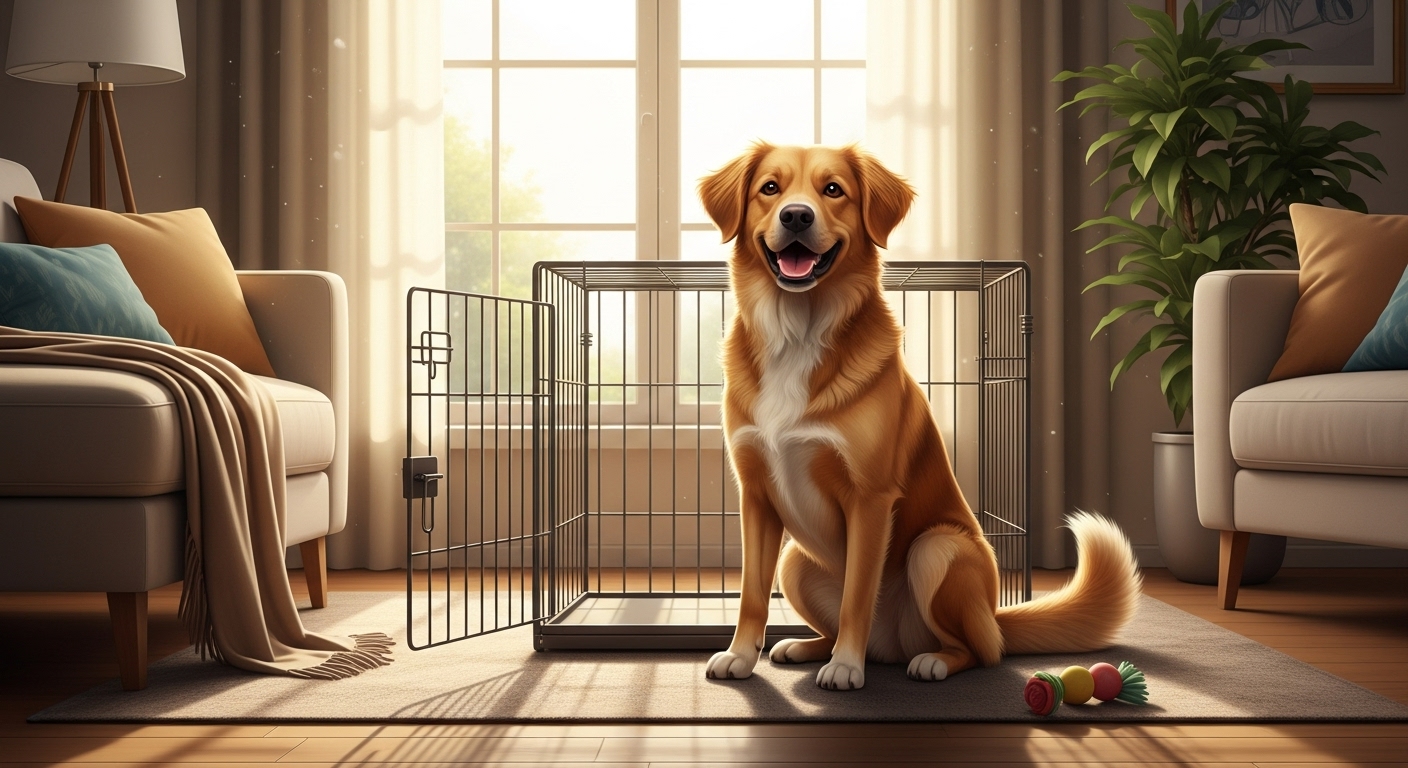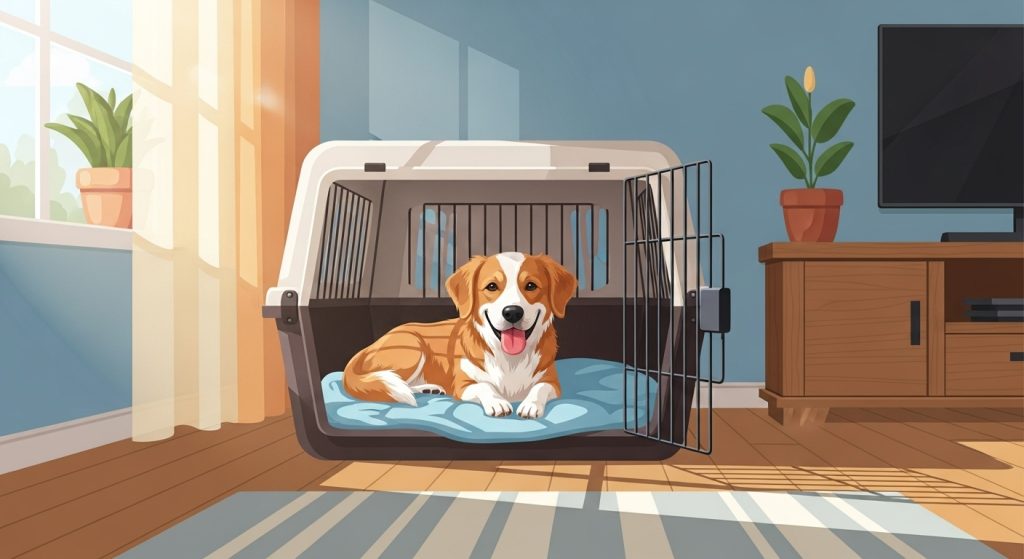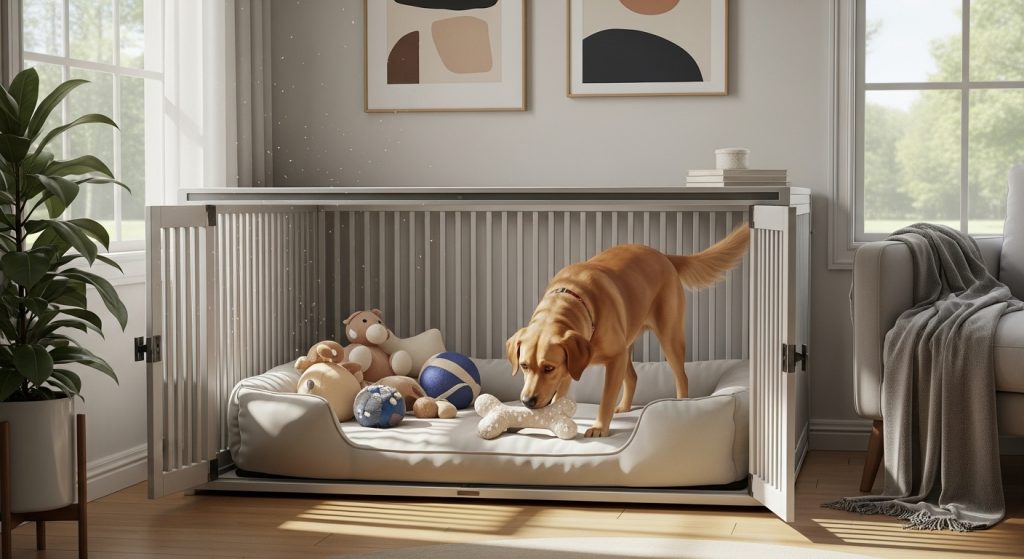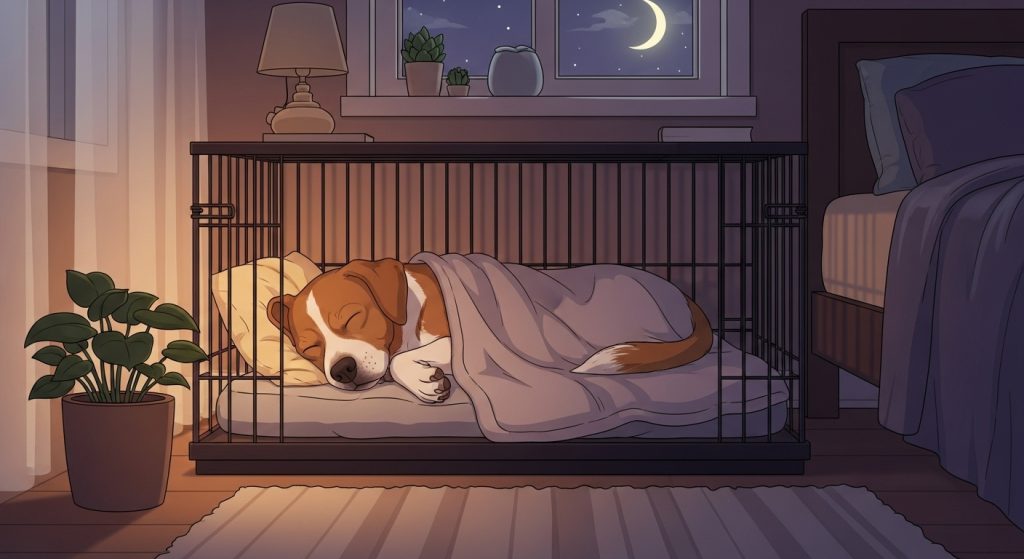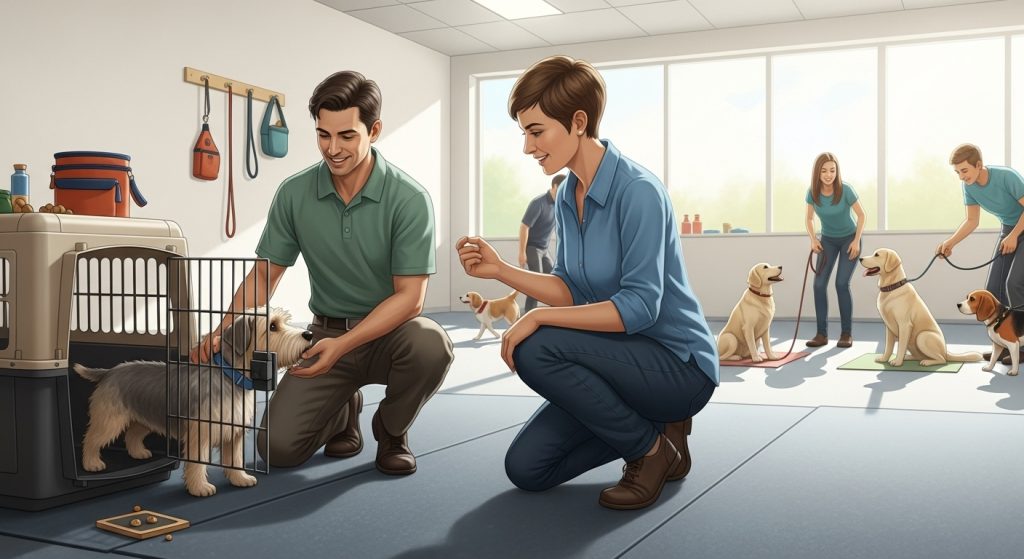Crate training is more than just a way to confine your dog—it’s a valuable training tool that promotes safety, comfort, and good behavior. Many dog owners wonder whether crate training is cruel, but when done correctly, it provides a safe and secure space for your pet.
Benefits of Crate Training
-
Safety: Keeps your dog safe when unsupervised.
-
Housebreaking: Accelerates potty training by teaching bladder control.
-
Travel: Prepares your dog for car rides or vet visits.
-
Behavioral Management: Reduces destructive behaviors and anxiety.
Dogs naturally seek a den-like space, making crates a comfortable retreat rather than a punishment.
Choosing the Right Crate and Setting Up
Selecting the proper crate is the first step toward successful crate training. Your dog’s comfort and safety depend on the crate size, type, and environment.
1. Crate Types
-
Wire Crates: Lightweight, portable, and provide ventilation.
-
Plastic Crates: Cozy, enclosed, ideal for travel.
-
Soft-Sided Crates: Lightweight, good for small dogs, but less durable.
2. Choosing the Right Size
A crate should be large enough for your dog to stand, turn around, and lie down comfortably, but not so big that your dog uses one corner as a bathroom.
3. Setting Up the Crate
-
Place a soft bed or blanket inside.
-
Add a few safe chew toys to create a positive association.
-
Keep the crate in a quiet, low-traffic area to reduce stress.
Pro Tips
a. Avoid using the crate as punishment.
b. Let your dog explore the crate freely before closing the door.
c. Start with short sessions, gradually increasing time inside.
Step-by-Step Crate Training Process
Crate training is most effective when done gradually and consistently. Rushing the process can lead to anxiety and resistance.
1. Introduce Your Dog to the Crate
-
Open the door and let the dog explore freely.
-
Place treats inside to create a positive association.
-
Speak in a calm, encouraging tone.
2. Encourage Short Stays
Once your dog is comfortable entering the crate:
a. Close the door for a few minutes while staying nearby.
b. Gradually increase crate time, rewarding calm behavior.
c. Never force your dog to stay if anxious.
3. Meal Time in the Crate
Feeding your dog in the crate is an excellent way to make it a positive space:
-
Place the bowl inside and allow the dog to eat.
-
Praise after meals for calm behavior.
-
Gradually leave the room while your dog eats to build independence.
4. Crate Training for Nighttime
-
Place the crate near your bedroom for reassurance.
-
Expect some whining initially; respond calmly but avoid letting the dog out immediately.
-
Gradually move the crate further as your dog adjusts.
Troubleshooting and Long-Term Tips
Even with careful training, some dogs may face challenges with crate training. Understanding common issues and applying solutions is key to long-term success.
1. Common Problems
-
Whining or Barking: Usually a call for attention or stress.
-
Refusal to Enter: Often due to previous negative experiences or fear.
-
Accidents in the Crate: Typically a result of overlong confinement or incomplete house training.
2. Solutions
-
Gradual desensitization: Slowly increase crate exposure.
-
Positive reinforcement: Reward every calm entry and stay.
-
Short, frequent breaks: Avoid leaving your dog in the crate for too long.
3. Long-Term Benefits
-
Reduces anxiety during travel or vet visits.
-
Provides a safe retreat when visitors arrive.
-
Supports overall behavioral consistency and training.
4. When to Seek Professional Help
If your dog exhibits severe anxiety, destructive behavior, or aggression in the crate, consider consulting a professional dog trainer or behaviorist.
Crate training your dog can be an extremely rewarding process when done with patience, consistency, and positive reinforcement. By choosing the right crate, gradually introducing your dog, and addressing behavioral challenges, you create a safe and happy space that benefits both the dog and owner.
Whether for safety, housebreaking, or travel, a well-trained dog is a happier, calmer companion. Start today, and enjoy the long-term benefits of a dog that loves their crate.

